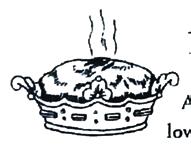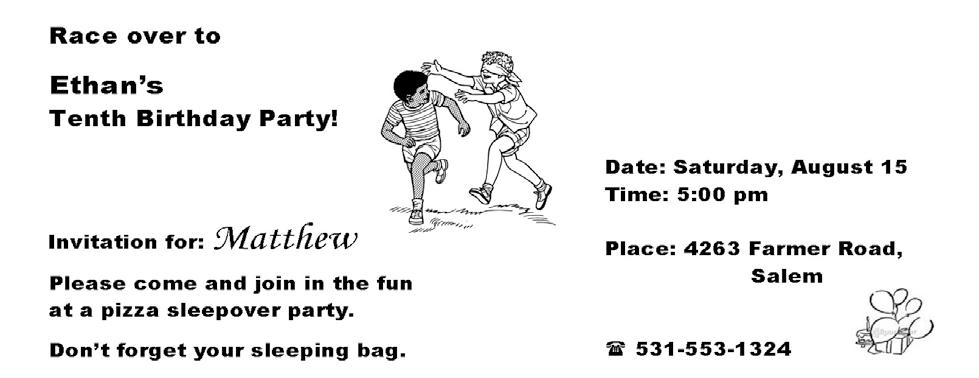Francesca Basile
Jacopo D’Andria Ursoleo
Claire Moore

Francesca Basile
Jacopo D’Andria Ursoleo
Claire Moore
• Nuovo Test con risposte semiguidate











• Learning Loss Test d’ingresso
• Attività di Listening con tracce audio a due velocità








• Quesiti ufficiali guidati con proposta di metodo
• Nuovi task su temi dell’Agenda 2030
• Sezione speciale Esame di Stato

EDIZIONE 2024 COMPUTER BASED
Il piacere di apprendere
Francesca Basile
Jacopo D’Andria Ursoleo
Claire Moore
EDIZIONE 2024 COMPUTER BASED

Il piacere di apprendere




Francesca Basile, Jacopo D’Andria Ursoleo, Claire Moore
PROVE NAZIONALI INGLESE
Responsabile editoriale: Beatrice Loreti
Art director: Marco Mercatali
Responsabile di produzione: Francesco Capitano
Progetto grafico e impaginazione: Sergio Elisei
Foto: Shutterstock, archivio Eli-La Spiga Edizioni
Illustrazioni: Gianluca Martini e Marcello Carriero
Copertina: Curvilinee
© 2023 Eli – La Spiga Edizioni Via Brecce 100 – Loreto info@elilaspigaedizioni.it www.gruppoeli.it
Stampato in Italia presso Tecnostampa
Pigini Group Printing Division, Loreto - Trevi 23.83.459.0
ISBN 978-88-468-4436-1
Le fotocopie non autorizzate sono illegali. Tutti i diritti riservati. È vietata la riproduzione totale o parziale così come la sua trasmissione sotto qualsiasi forma o con qualunque mezzo senza previa autorizzazione scritta da parte dell’editore.
L’opera si propone di preparare gli studenti del triennio della Scuola Secondaria di Primo Grado alla Prova nazionale di Inglese, introdotta a partire dall’A.S. 2017/2018 dall’Istituto INVALSI in versione computer based (CB).
Si compone di due volumi, uno per i docenti e uno per gli studenti. Il volume per gli studenti include:
• il Learning Loss Test, fondamentale per verificare il livello di preparazione degli studenti in vista dell’inizio della classe terza della Scuola Secondaria di I Grado attraverso una serie di esercizi pensati per misurare le loro competenze in cinque macro-aree: Language functions, Vocabulary, Listening comprehension, Grammar e Writing;
• un’ampia sezione (Quesiti ufficiali) con gli esempi ufficiali pubblicati dall’INVALSI, incluse le più recenti tipologie di attività, commentati e corredati da strategie per risolverli nei box Exam competences, per permettere agli studenti di familiarizzare con le diverse tipologie di quesiti che potrebbero comporre la prova ufficiale;
• otto prove propedeutiche (Test), di cui la prima rinnovata e arricchita da numerose risposte semi-guidate in forma di nuovi spunti e strategie risolutive per aiutare gli studenti a identificare il metodo più efficace per rispondere ai quesiti;
• un’aggiornata selezione di testi di Reading corredati da esercizi di comprensione e nuove attività di Listening tutte su argomenti e temi dell’Agenda 2030, imprescindibili per educare gli studenti allo sviluppo sostenibile;
• un inserto finale, l’Exam Training, con esempi di tutte le prove e letture in chiave CLIL con collegamenti alle altre discipline, per arrivare preparati alla prova scritta e orale di Inglese.
Tutte le prove proposte nel volume sono state pensate e realizzate a partire da un’attenta analisi degli esempi ufficiali di prove pubblicati sul sito web dell’INVALSI, nonché da una scrupolosa disamina delle indicazioni operative ufficiali fornite dall’Istituto stesso, nel tentativo di fornire a studenti e insegnanti dei materiali il più fedele possibile al format ufficiale delle prove, consentendoci di offrire uno strumento di preparazione alla nuova Prova nazionale di Inglese completo e aggiornato. Al termine di ogni prova, una tabella di Self-evaluation consente agli alunni di registrare i loro risultati al fine di riconoscere e individuare il livello di preparazione raggiunto e di autovalutarsi.
Anche per questa edizione, le tracce audio delle attività di Listening sono state registrate a due velocità differenti con l’obiettivo di non lasciare alcuno studente “indietro”, e possono essere ascoltate tramite la app ELI LINK oppure scaricate dal sito web dedicato al volume.
Infine, per consentire a studenti e insegnanti di familiarizzare con le nuove prove in versione computer based (CB), tutti i Test presenti in questo volume sono disponibili anche in formato interattivo nel libro digitale.
Un’estensione online del volume contiene attività di Language in use e una sezione speciale intitolata Grammar Reference e Verb Tables che guiderà gli studenti a conoscere e a ripassare gli argomenti di grammatica del triennio presenti nelle prove INVALSI.
Il volume per i docenti contiene le griglie di correzione delle prove, corredate da indicazioni didattiche e dalle trascrizioni delle tracce audio relative a tutte le attività di Listening
Buon lavoro a insegnanti e studenti!
Read the following dialogues (1-10) and match them to the language functions (A-J).
A. ordering food and drinks
B. asking for and giving directions
C. describing people
D. inviting someone
E. asking for and giving advice
F. agreeing and disagreeing
G. apologizing and making excuses
H. asking permission and making requests
I. shopping for clothes
J. talking about holidays
– What was that terrible noise?
– I’m sorry, Mum. I dropped a glass on the floor.
1
– Not one of the expensive ones!
– Yes, but all the others were in the dishwasher.
– Well you’re lucky you didn’t cut yourself.
– Can I help you?
– No, thanks. I’m just looking. Actually, how much is this hoodie?
2
– It’s £15.95.
– Can I try it on?
– Sure, the changing rooms are over there.
– Are you ready to order?
– Yes. I’d like the roast beef please.
– Would you like a starter?
3
– Oh, yes, I’ll have the tomato soup, please.
– Did you enjoy your meal?
– Yes it was lovely. Can I have the bill, please?
Where did you go on holiday?
– We went to a campsite at the beach.
– How did you get there?
– We travelled by car.
– What was the weather like?
– It was hot and sunny!

5
– Excuse me. Can you tell me the way to the cinema, please?
– Sure. It takes about 5 minutes on foot! Go past the car park, the supermarket and the post office. Walk to the end of the road. The cinema is on the corner.
– Thank you so much!
– You’re welcome.
– What does your friend Arif look like?
– He’s very attractive.
– Is he taller than you?
6
– No, he’s a bit shorter.
– What’s he like?
– He’s nice, outgoing and a real laugh, but a bit bossy.
– Dad, can I go to Jake’s house this afternoon? He’s got a new video game.
– Yes, but could you help me clean the house first?
7
– I’m sorry, I can’t, Dad. I’m studying. I’ve got a test.
– Well, if you have to study you don’t have time to go over to Jake’s.
– OK then. I’ll help you.
– What should I give my dad for Father’s Day?
– You should give him something special.
8
– I don’t have much money though.
– Why don’t you make him a cake?
That’s a great idea!
– I don’t like horror movies.
– Neither do I. I think they’re frightening! And I don’t like musicals either.
Oh, really? I do. I love them.
9
I think detective stories are great. – So do I. And I love thrillers.
Me, too. I think they’re cool. 10
– Are you free on Saturday evening?
– Yes, I am. Why?
– I have tickets to the theatre. Would you like to come?
– Yes, please, I love the theatre.
– Great. It starts at 7 o’clock.

Read the dialogues below and choose the best option (A, B or C).
1. Can I borrow your newspaper?
A. Me, too! Goodbye!
B. All right! Here you are!
C. No, thank you, Mum!
2. Shall we go to the shopping centre tomorrow?
A. Sorry, I can’t. My mum needs help at home.
B. I hate watching videos.
C. The shopping centre will close in 10 minutes.
3. I bought a new pair of trainers in that shop.
A. It looks nice.

B. What size are they?
C. I need it, too.
4. Hello, are you ready to order?
A. Yes, we are. Two cups of tea, please.
B. Can we have the bill, please?
C. Where are the toilets?
5. Why did you leave without saying goodbye?
A. We are leaving for New York.
B. Hello everybody! How are you?
C. I’m sorry, the taxi was waiting!
Read the descriptions and complete the words. The first letter has been given to you.
1 a form of water transport f
2 another word for intelligent c
3 a word that describes a person with no hair b

4 a household chore to remove wrinkles from clothes i
5 another word for “hot” with a positive meaning w
Complete the following dialogues (A-E) with words from the boxes below. There is one extra word in each box that you do not need to use.
A. guide book • comic books • novels • fairy tales
Teacher: Good morning class! What’s your favourite kind of book, Jenny?
Jenny: I love 1 like Cinderella or The Ugly Duckling. My best friend Lola prefers 2 . They are so funny and she laughs a lot.
Pedro: I really love 3 . I’ve just read one by Charles Dickens. It was such a great story.
C. park • past • foot • map
Tyra: Excuse me! I need to buy some stamps. How do I get to the post office?
Woman: Well, it’s a bit difficult to explain. Do you have a 1 ?
Tyra: No, I don’t. How far is it?
Woman: It’s about 5 minutes on 2 from here. See that tall building over there? Go 3 it and you’ll see the post office.
D.
B.
windy • cold • cloudy • sunny
Benny: I don’t like 1 days when you can’t see the sun. I prefer 2 days. The season I love the most is the summer. You can wear shorts and T-shirts and play outside.
Fran: What about going to the beach tomorrow?
Benny: It’s still too 3 to have a swim but we can windsurf. And then we can have a picnic on the beach!
take out the rubbish • clear the table • cook dinner • make my bed
Danielle: Do you have to help in the house, Jack?
Jack: Oh yes! My parents like me to do some housework.
Danielle: I only have to 1 and tidy my room. Nothing in the rest of the house. What do you have to do?
Fanny: After meals I have to 2 . I also have to 3 because we have the bins in the garden. It’s not much. I should do more.
E. slim • look • friendly • curly
Laura: Hi Lydia! I heard there’s a new student in your class.
Lydia: Yes, his name’s Patrick and he’s from Northern Ireland.
Laura: Is he? What does he 1 like?
Laura: He’s tall and 2 . He‘s got short, 3 hair and he wears glasses.
Listen to two students, Lilith and Mark, talking about Lady Gaga. Answer questions (1-5) with one word or number.
1. Lady Gaga was born in New York in .
2. Her stage name comes from a song by


3. Two of her songs are Paparazzi and Poker
4. She has in some films.
5. She owns four .
Read the text about Alissa’s trip to Dublin. Then listen and underline the information you hear that is different. There are five differences.

I’m Alissa! I’m 14 years old! I’m going on a school trip to Dublin next week for a few days –I can’t wait. On Tuesday we’re going by bus from my town, Cork and the journey will take about two and half hours. We’re going to have a brilliant time. We’re staying at a youth hostel in the centre, so that should be fun. In the afternoon we’re going to see the Famine Sculpture. It’s a collection of sculptures of people walking on the waterfront. Many Irish people moved from Ireland to America in the 1840s because they had nothing to eat.
On Wednesday morning we’re visiting Dublin Zoo where there are lots of amazing animals. Last week, a baby white rhinoceros was born. We can’t wait to see him. On Thursday, we’re seeing a very old building, Dublin Castle, and we’re spending Friday at a school in Dublin to make friends with the students there and see what they study at school. Finally, on Saturday, we have a free day. Hooray! My friends and I are going shopping. We’re leaving on Saturday evening after dinner at about 8 pm, so we should get home very late that night.

A. Complete the sentences with the correct option (A, B or C).
1 There isn’t water left in the bottle.
A. much B. many C. some
2 There are tomatoes in the garden, we can eat those.
A. a few B. a little C. much
3 We haven’t got salt for the pasta.
A. some B. a C. any
4 Would you like biscuit?
A. some B. a C. a little
5 chips do you want?
A. How many B. How much C. A few
B. Complete the sentences with the simple past of the verbs in brackets.
1 Jason (go) to South Africa last summer.
2 The weather (be) quite sunny last May.
3 The students (study) really hard this year.
4 Where (you / stay) when you (be) on holiday?
5 “ (you / have) an English lesson yesterday?” “Yes, we (do).”
A. Complete the sentences with the correct form of the adjectives in brackets.
1 Luisa is (small) than Mary.
2 Henry is the (amusing) person I know.
3 This film is (funny) than his last film.
4 Italian pizza is the (good) in the world.
5 Horror films are (frightening) than science fiction films.
B. Complete the sentences by choosing the correct alternative.
1 We mustn’t / don’t have to get up early, we’re on holiday.
2 Jane could / can read when she was only four years old.
3 You should / shouldn’t go to the dentist if you have a toothache.
4 The children must / can wear a uniform to school. It’s a rule.
5 Dad, shall / can I go to Mark’s house at the weekend, please?

Write a letter to a singer or a band you like using the notes. Write 80-100 words.
• Introduce yourself (name, age, school, subjects you like, hobbies…)


• Say why you like the singer or band.
• Say what your dreams are for the future.
Dear ,
I’m writing to you because I really believe that you and your band are great!
My name is , I’m
Write an email to a foreign student who is going to spend some time with your family.
Write 80-100 words.
• Introduce yourself and describe your family.
• Give directions to get to your house from the nearest train station.
Dear ,
My name is and you’re staying with my family next week. I live in



Read the text about a pub in Bath. Answer the questions (1-5). Use a maximum of 4 words. Write your answers in the boxes. The first one (0) is an example.

In questo esercizio devi leggere un breve testo (in genere un invito, una scheda, un avviso) e alcune domande di comprensione, cui dovrai rispondere usando da una a quattro parole per ciascuna risposta. Per risolvere questo esercizio, segui questi semplici passaggi:
1) Per prima cosa, leggi le domande per capire quali informazioni cercare nel testo, e individua le parole chiave.
2) Leggi ora il testo con attenzione e cerca di individuare la frase o il paragrafo in cui si trova la risposta a ciascuna domanda.
3) Se non sai rispondere a una domanda, non preoccuparti! Passa a quella successiva e, solo alla fine, ritorna sulla domanda lasciata in sospeso.
4) Verifica di non aver fatto errori di ortografia nelle risposte che hai fornito.
5) Prima di passare all’esercizio successivo, verifica che le risposte fornite siano corrette.
Cerca di svolgere questo esercizio in non più di 7 minuti.
King William is just fifteen minutes’ walk from Bath Abbey, and a destination for lovers of great food and proper pubs Independently owned for over 10 years, it’s a good idea to book, as this cosy little Georgian eatery is a favourite for locals and visitors alike
Opening Times
Monday to Thursday 12pm – 3pm and 5pm – 11.30pm
Friday 12pm – 3pm and 5pm – 12am

Saturday 12pm – 12am
Sunday 12pm – 10 30pm
0 What is the name of the pub?
1. How far is the pub from Bath Abbey?
King William
2. Who goes to the pub?
(Give one answer)
3. What time does the pub close on Tuesday evening?
4. What time does the pub open for lunch?
5. When is the pub open all afternoon?
(Give one answer)




Read the invitation card. Answer the questions (1-6). Use a maximum of 4 words. Write your answers in the boxes. The first one (0) is an example.
Exam competences
In questo esercizio devi leggere un breve testo (in genere un invito, una scheda, un avviso) e alcune domande di comprensione, cui dovrai rispondere usando da una a quattro parole per ciascuna risposta. Per risolvere questo esercizio, segui questi semplici passaggi:
1) Per prima cosa, leggi le domande per capire quali informazioni cercare nel testo, e individua le parole chiave.
2) Leggi ora il testo con attenzione e cerca di individuare la frase o il paragrafo in cui si trova la risposta a ciascuna domanda.
3) Se non sai rispondere a una domanda, non preoccuparti! Passa a quella successiva e, solo alla fine, ritorna sulla domanda lasciata in sospeso.
4) Verifica di non aver fatto errori di ortografia nelle risposte che hai fornito.
5) Prima di passare all’esercizio successivo, verifica che le risposte fornite siano corrette.
Cerca di svolgere questo esercizio in non più di 7 minuti.
0 Who is having a birthday party? Ethan
1. How old will the boy be on his birthday?
2. Who is the invitation for?

3. What kind of birthday party is it?
4. When is the party?
5. When does the party start?
6. Where is the party?
tratto da www.invalsi.it
Read some visitors’ opinions (1-5) about York Castle Museum and match them with the sentences (A-G). There is one sentence you do not need. Write your answers in the boxes. The first one (0) is an example.
Exam competences
In questo esercizio devi abbinare delle opinioni a una serie di brevi frasi che ne riassumono il significato. Per risolvere questo esercizio, segui questi semplici passaggi:



1) Per prima cosa, leggi le opinioni riportate.
2) Leggi ora le frasi e, prima di abbinarle alle opinioni, sottolinea le parole chiave.
3) Leggi un’altra volta le opinioni e, per ciascuna di esse, cerca di individuare la frase che ne riassume meglio il significato.
4) Se un abbinamento non ti convince, non preoccuparti! Passa agli abbinamenti successivi e, solo alla fine, ritorna sull’abbinamento lasciato in sospeso.
5) Prima di passare all’esercizio successivo, rileggi gli abbinamenti che hai fatto, assicurandoti che siano corretti.
Cerca di svolgere questo esercizio in non più di 6 minuti.
0
“… a really interesting trip back in time.” A Lehmann – Bremen, Germany
1. “ beautiful city, wonderful museum, great value.” Mr & Mrs Ishikawa – California, USA

2. “ the kids really enjoyed the toy collection.” Mrs C. Hall – West Yorkshire, England
3. “ best museum we have ever visited, very good value.” The Biggin family – Norwich, England
4. “ … so much to see, we’ll definitely come back.” Mr P. Stephens – Gloucester, England
5. “ … we didn’t want to leave, had a great visit.”
Z. Howes Bundoora, Australia
A. They have never seen a better museum.
B. They enjoyed the museum and the city.
C. They visited the museum with their children.
D. They didn’t have to pay for their tickets.
E. They liked the historical things in the museum.
F. They wanted to stay in the museum.
G. They want to visit the museum again.

Read the text about hippos. Choose the correct answer (A, B, C or D) for questions 1-5. Put a cross (✘) in the correct box. Only one answer is correct. The first one (0) is an example.
In questo esercizio devi leggere un testo (un breve racconto, un articolo di giornale o di una rivista) e rispondere ad alcune domande a scelta multipla, scegliendo l’opzione giusta tra le quattro proposte. Per risolvere questo esercizio, segui questi semplici passaggi:
1) Per prima cosa, leggi le domande di comprensione proposte, e individua le parole chiave presenti in ciascuna di esse.
2) Leggi ora il testo velocemente, cercando di coglierne il significato generale.
3) Leggi il testo una seconda volta. Questa volta, però, fai una lettura attenta e puntuale, volta a cogliere i punti principali della narrazione, invece del significato generale.
4) Sottolinea le parole chiave del brano e cerca di capire in quale frase o paragrafo sono contenute le risposte alle domande di comprensione.



Read the text about hippos. Choose the correct answer (A, B, C or D) for 1-5. Put a cross () in the correct box. Only one answer is correct.
5) Se hai un dubbio sulla risposta a una domanda, non preoccuparti! Passa alla domanda successiva e, solo alla fine, ritorna sulla domanda lasciata in sospeso.
6) Prima di passare all’esercizio successivo, rileggi le risposte che hai dato, assicurandoti che siano corrette.
The first one (0) is an example.
Cerca di svolgere questo esercizio in non più di 8 minuti.
Where are hippos born? A hippo baby (called a “calf”) is born on land or in water. It is protected by the mother, not only from crocodiles and lions but from hippo bulls that may try to attack them in the water.
What do hippos love? Hippos love water and they spend most of the day in it to stay cool. The hippo can even breathe, see, and hear while its body is under water because its nose, ears, and eyes are on the top of its head.
Do hippos swim better than people? Yes, they are excellent swimmers and can hold their breath for five minutes. Hippos can walk under water along the bottoms of rivers and lakes.
Hungry
Hippos are vegetarians. At night, they come out of the water and feed off the grass.

Although hippos are vegetarians, they are still one of the most dangerous animals in the world. Once on land, hippos can run very fast, much faster than people normally can. When a hippo yawns it is not tired but shows its teeth to frighten other animals.
always born on land.
hippo yawning